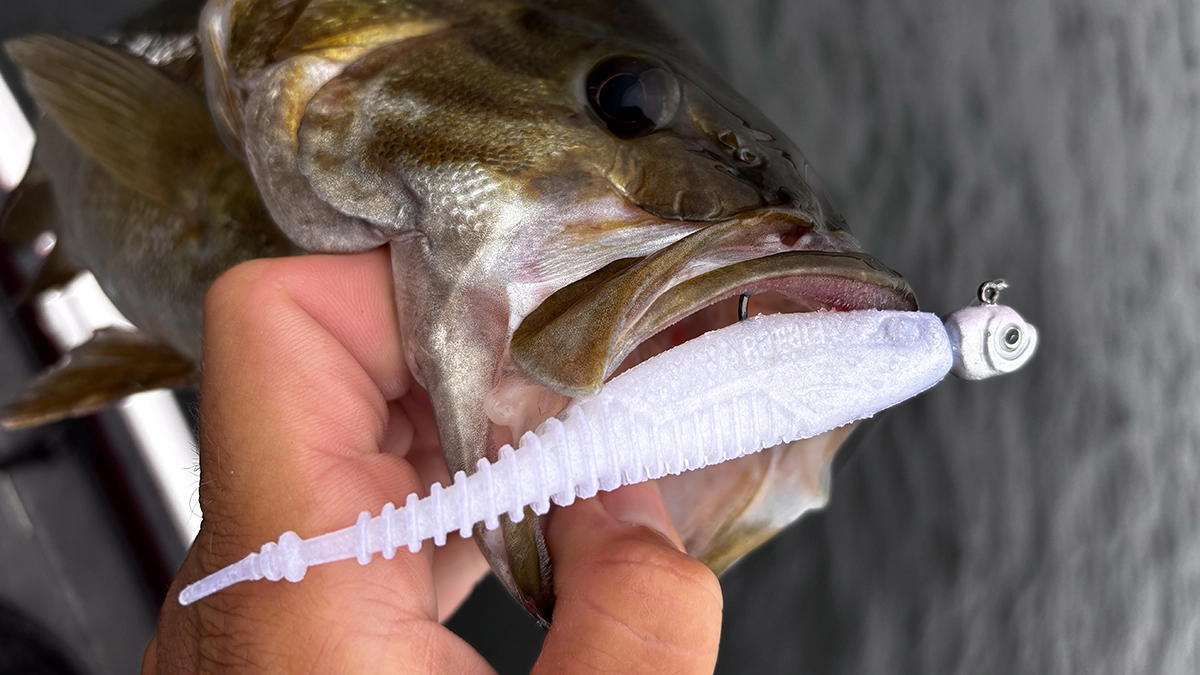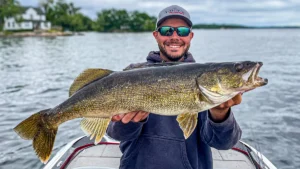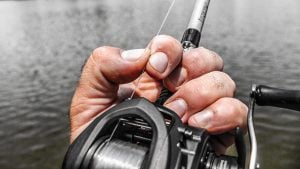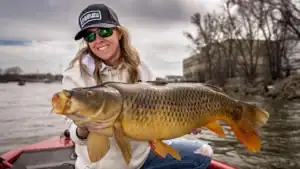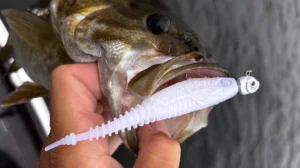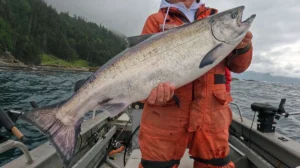If there’s one lesson I’ve learned over the years, it’s that bass will always follow the food. All bait styles and techniques have their place, but if you don’t understand where the baitfish are and how they move, you’re fishing blind. Baitfish patterns, seasonal movements, daily behaviors, and habitat preferences are the backbone of bass fishing strategy. Learn them, and suddenly your local lakes get easier to catch more bass.
I promise, once you figure it out, it will be a game-changing strategy. I’ll break down how to read baitfish patterns, why they matter, and how to adapt your approach so you’re always one step ahead instead of two steps behind.
Why Baitfish are the Key
Bass are opportunistic predators, but in many water bodies across the country, their diet overwhelmingly consists of small forage fish. These could be but aren’t limited to shad, shiners, bluegill, minnows, and possibly even perch or herring. If you want to consistently locate bass, understand where the food is and what they’re doing. Ask yourself one question, “Where and what are the baitfish right now?”
Bass rarely stray far from food. Even trophy-sized bass that sometimes prefer a crawfish meal will keep tabs on baitfish schools. Think of baitfish as the compass that points you toward bass. If there’s baitfish around, odds are bass aren’t far behind, looking for an easy meal.
Seasonal Movements of Baitfish
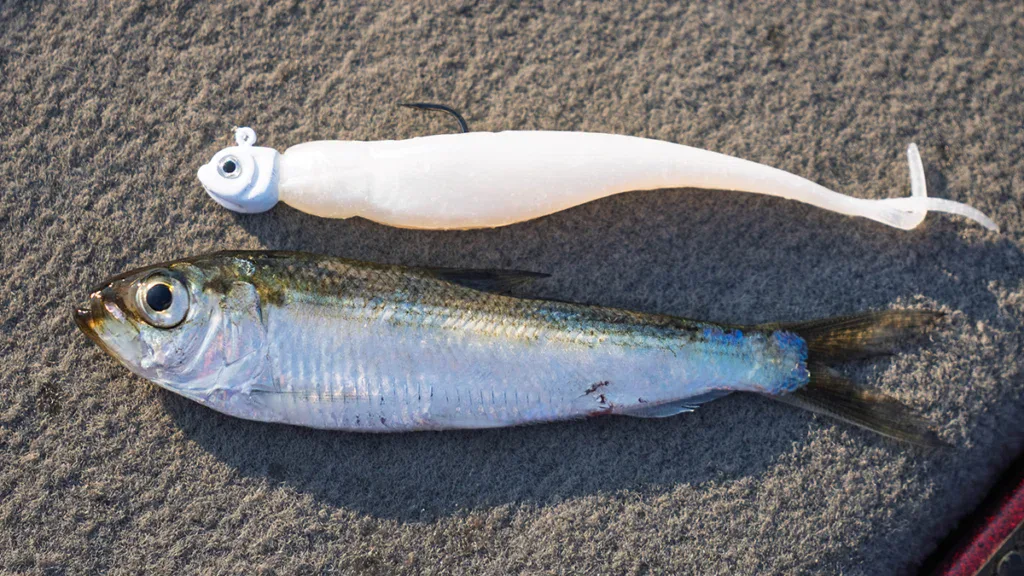
Understanding how baitfish move through the year gives you a roadmap to follow bass. Let’s break it down by season:
Spring
As water temperatures climb, baitfish migrate into the shallows. They’re seeking warmer water and a place to spawn. This will bring bass shallow as well, where they ambush schools of baitfish against spawning flats, on the bank, or shoreline structure.
- Where to Look: Creek arms, coves, shallow flats near deeper water
- Best Approaches: Jerkbaits will be perfect for presenting that wounded baitfish look to make an easy meal for most bass. Swimbaits with a slender profile rigged on a small jighead work well to present a slower presentation when the water is colder.
Summer
When the heat sets in, oxygen levels and water temperatures play a huge role. Baitfish school up and move to deeper, cooler water or relate to current. This is when you’ll see big offshore schools of baitfish on your electronics. Baitfish will constantly be moving throughout the day, so keep an eye out visually or with your electronics.
- Where to Look: Main lake points, humps, channel swings, submerged timber
- Best Approaches: Deep-diving crankbaits can cover those deeper depths effectively and at a variety of sizes, shapes and colors, it can imitate many different kinds of bait. With suspended fish on bait schools, it’s hard to beat a Damiki style bait rigged on an open jighead to present a bait right in the fish’s face.
Fall
This is the season of the baitfish chase. Many different forage species push into the backs of creeks and coves, and bass follow in classic fall feeding fashion. Fall fishing can be feast or famine, find the bait and you’ll find bass usually.
- Where to Look: Creek channels, backs of coves, shallow flats with bait activity
- Best Approaches: Topwaters create surface disturbance imitating fleeing baitfish, which happens more in the fall than any other season. Spinnerbaits also excel this time of year, creating lots of flash and vibration to imitate a school of baitfish. I love to throw a Strike King Baby Burner Spinnerbait as its smaller profile mimics the size of the baitfish in the fall. This is a time for power fishing and covering water.
Winter
Cold water makes baitfish sluggish, regardless of the species. Many of them ball up tightly in deep water, often near structure or in vertical zones like bluff walls. Some get as close as they can to the bottom. Bass try to conserve energy and wait to pick off weak or dying baitfish.
- Where to Look: Deep channels, steep drops, ledges, and around bait clouds on electronics
- Best Approaches: There are two main baits that I love to throw in the winter when it’s cold. First is a slow rolling minnow on a football head jighead with a smaller hook. That little bait has accounted for more big bass in my boat during the colder months. Second would have to be a blade bait. Preferably one that comes in a variety of sizes and colors to match all baitfish patterns. Remember, if you think you’re fishing slow, slow down even more.
Daily Movements
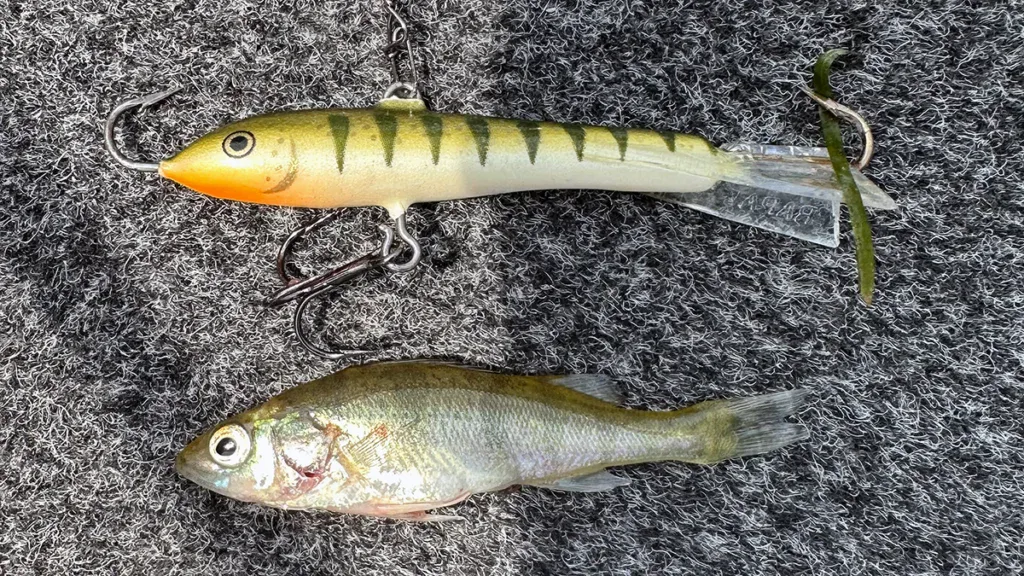
It’s not just the seasons that dictate prey movement. Baitfish often shift throughout the day. Knowing these patterns helps fine-tune your timing.
- Morning: Baitfish rise to the shallows during low light. Bass are aggressive, so topwaters, hardbaits, and other moving baits will shine.
- Midday: Sunlight pushes bait deeper or under shade. The baitfish will suspend or hug structure, requiring slower presentations like a dropshot or Damiki style presentation.
- Evening: Much like morning, baitfish return shallow, and bass capitalize on fading light. It’s another prime window for aggressive baits.
- Night: Some baitfish remain active under the moonlight, especially around lit docks or marinas. Bass often feed heavily here, and dark-colored lures or noisy topwaters can be effective. Black spinnerbaits with a single colorado blade, like a Strike King Night Spinnerbait, are killer during these times.
Reading The Water
Baitfish can give themselves away. Look for flashes on the surface, skipping across the water, or birds diving down to feed. But often, prey show themselves in more subtle ways. Here are some clues to dial in on baitfish presence.
- Electronics: Modern technology like chirp and forward-facing sonar make finding bait schools easier than ever. Look for tight balls of bait or streaks of fish moving through the water column.
- Birds: Seagulls, terns, herons, and loons are nature’s fish finders. If they’re working an area, baitfish are nearby.
- Surface Activity: Flickering, dimpling water, or bait jumping clear of the surface often means the prey is being chased by predators underneath.
- Color of the Water: In clear water, baitfish may roam more openly. In stained or muddy water, they’ll cling to structures or the bank itself.
Matching The Hatch

It’s one thing to find baitfish, but the next step is imitating them effectively. Bass can be selective, especially when they’re keyed in on one specific forage. Here are some things to consider when fishing around certain prey.
- Shad/Herring: These baitfish are usually very silver, shiny, and give off tons of flash. Use baits that give off lots of flash and vibration to stand out a little from the main school.
- Bluegill/Perch: Green pumpkin, chartreuse, and blue hues are the main color profiles. These fish also have a bulkier profile than most baitfish. Spinnerbaits, chatterbaits, and crankbaits are great options.
- Minnows/Shiners: Generally smaller in size, you want to go smaller in your bait size. These prey items are usually a little more dull in color. Matte finish baits are great for imitating these species. Small, subtle baits like finesse swimbaits, or soft plastic minnow baits are key.
Fine Tuning Your Strategy
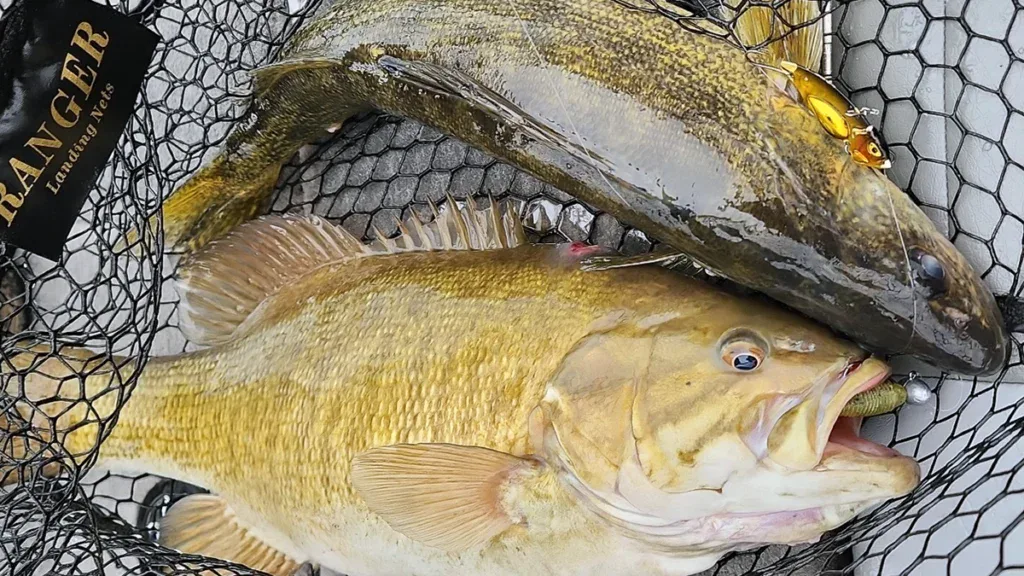
Remember that baitfish patterns aren’t just about location, they truly dictate how bass feed. When baitfish are scattered throughout the water column, bass may hunt solo and be more spread out. When baitfish school tightly, bass often school as well, working together to coral forage and pick off bait individually.
That’s why some days you’ll catch one here and one there, while other days you’ll find yourself in the middle of a feeding frenzy with multiple bass blowing up on the surface. Here’s how I personally break a new lake when struggling to find fish. Sometimes it can be a pain, but with the right breakdown, it can help you put together the pieces to figure out a pattern.
- Start with the Season: I ask myself, “Where should the baitfish be right now?” That should narrow down the lake into sections holding the most baitfish.
- Look for Activity: I will scan with my electronics and or watch for bird or surface activity. This will tell me where the bait is positioned in the water column or what structure they are relating to.
- Match the Forage: Once I know what type of baitfish are present, I pick a lure that mimics them.
- Adjust Presentation: If baitfish are scattered and bass are more roaming around, I go with a slower and motionless retrieve. If baitfish are balled up and aggressive, I go with a fast and more aggressive retrieve. Always vary retrieve speeds and let the fish tell you what they want.
On the Water Success
Understanding baitfish patterns is like having the master key to the lake. Without them, you might stumble onto a few bass here and there. But when you line up your fishing with the seasonal and daily movements of baitfish, you’re no longer guessing, you’re predicting when that next bite will be.
As a bass fisherman, it’s easy to get caught up in lures, colors, and history. Especially when it comes to certain spots on the lake. But remember, bass are slaves to their food. Wherever the baitfish go, the bass won’t be far behind. Learn to read those patterns, and you’ll unlock more consistency, more big fish, and a deeper understanding of the waters you fish. Next time you hit the lake, don’t just think about where the bass are, ask yourself where the baitfish are.
